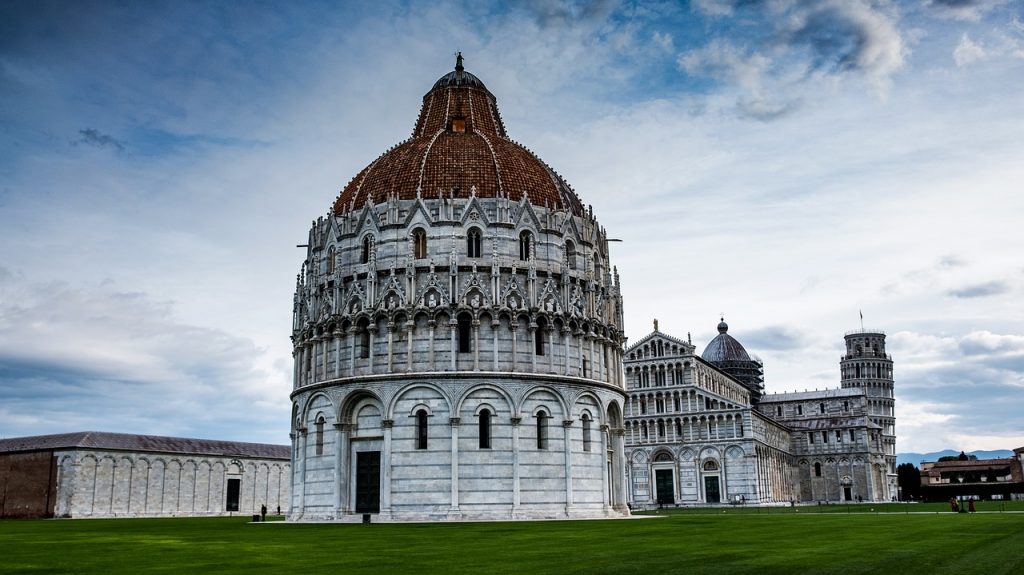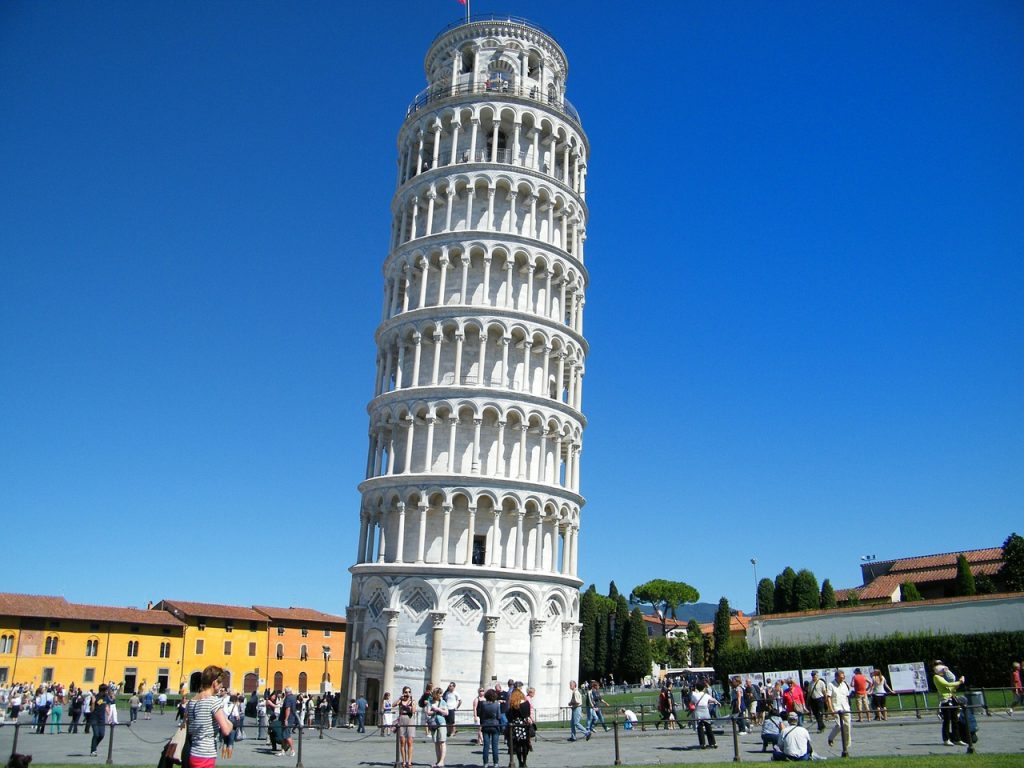The Square of Miracles or Piazza dei Miracoli in Pisa is one of the most impressive squares in the whole of Italy, where the Leaning Tower of Pisa, the Cathedral and Baptistery all vie for attention at once.
Despite the hype, nothing can prepare you for the grandeur of the Square of Miracles. The snow white marble of the buildings shines against the sky. The elaborate architecture shows off Pisa’s glorious past. And the Leaning Tower seems to defy the laws of physics.
The Italian writer D’Annunzio gave this square the nickname “Field of Miracles” and it stuck. It’s a name that still seems appropriate today, as does its status as a UNESCO World Heritage site. Despite the crowds of tourists posing in front of the tower, this is one of the indisputable highlights of a trip to Tuscany.

The Square of Miracles – Discovering the treasures of Piazza dei Miracoli
Cathedral of Santa Maria Assunta
Pisa Cathedral is an extraordinary piece of Romanesque architecture. Its marble facade is alive with different hues. And from its arches to its elliptical dome, there is extraordinary detail wherever you look. Don’t miss the pulpit by Giovanni Pisano inside.

Leaning Tower
The world famous Leaning Tower is the bell tower of the Cathedral but it’s not attached to the church. This visually striking Romanesque-Gothic tower is a symbol of Tuscany, and a truly Italian icon. Walk around it to appreciate its intricate detail, climb to the top, or just snap a few selfies with everyone else.
=> 10 Most Beautiful Squares in Tuscany

Baptistery
This round Gothic Baptistry, is lavishly decorated and topped with an unusually shaped dome. The decorative detail on the portals is quite remarkable, and there’s an important pulpit by Nicola Pisano inside.
⇒ Did you know that Pisa Baptistery is the largest in Italy? Find out 10 fascinating facts about Pisa Baptistery
Monumental Cemetery
The Medieval Camposanto (Holy field) is an atmospheric sight, that’s both simple and elegant. It has a collection of sculptures and the remains of a 14th century fresco. It also offers respite from the crowds that are a regular feature in the square.
But there’s more to Pisa than the Square of Miracles! Find out about all the Top Things to do in Pisa during your stay.

A few tips
Don’t expect peace and quiet here. It’s a busy place year round, but the atmosphere is festive. It’s best to visit early in the morning in high season or late in the afternoon. Our advice? Come at night when the lighting and tranquillity make the place magical. During the summer months it’s possible to visit the buildings until 10pm. Book in advance if you’re thinking of climbing the tower, or join a guided tour to skip the line and save time.
A bit of history
Pisa’s cathedral complex is located in the northwestern part of the city, and was originally near a port, at the banks of a river that doesn’t exist anymore. The building of the Duomo of Santa Maria Assunta started in 1064, and it was intended to celebrate Pisa’s might as a Marine Republic.
Later the Baptistery and the Bell Tower were built and finally the Camposanto, on soil from the Holy Land. The Archbishop is said to have had more than fifty shiploads of earth brought directly from Mount Golgotha to Pisa after the Crusade of 1202. But the local soil was to present a problem, as it wasn’t stable enough to support the very tall and heavy structure of the bell tower, and it promptly started to tilt a few years after the construction.
During the Middle Ages Pisa was at war with the Saracens, founding colonies and trading posts all over the Mediterrenean Sea. The new religious site was built with the spoils of its numerous campaigns.
The architectural style also reflects the “internationality” of Pisa at the time, and includes many Oriental decorations, which also appear on the dome of the Cathedral. This original style took the name of “Pisan Romanesque” and expanded to many areas that were under Pisan influence, though Piazza dei Miracoli remains the greatest example.

